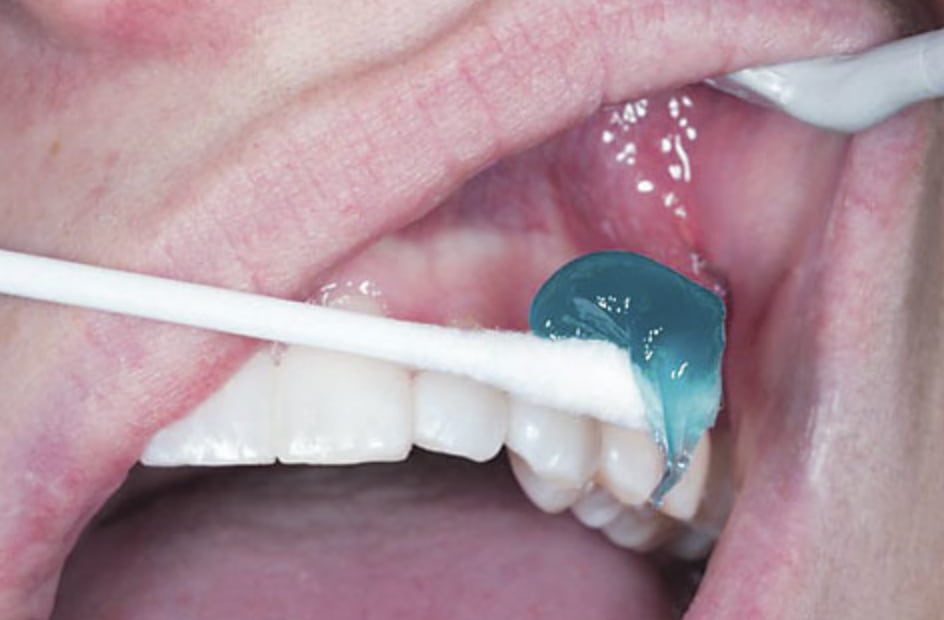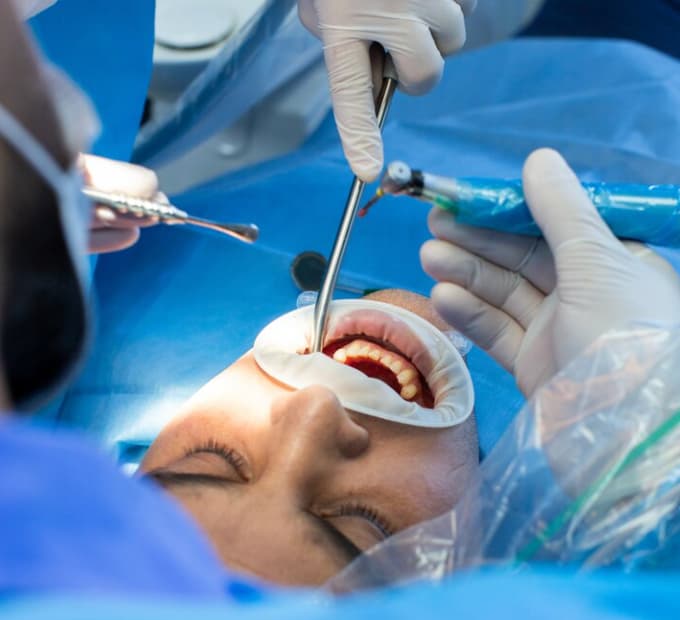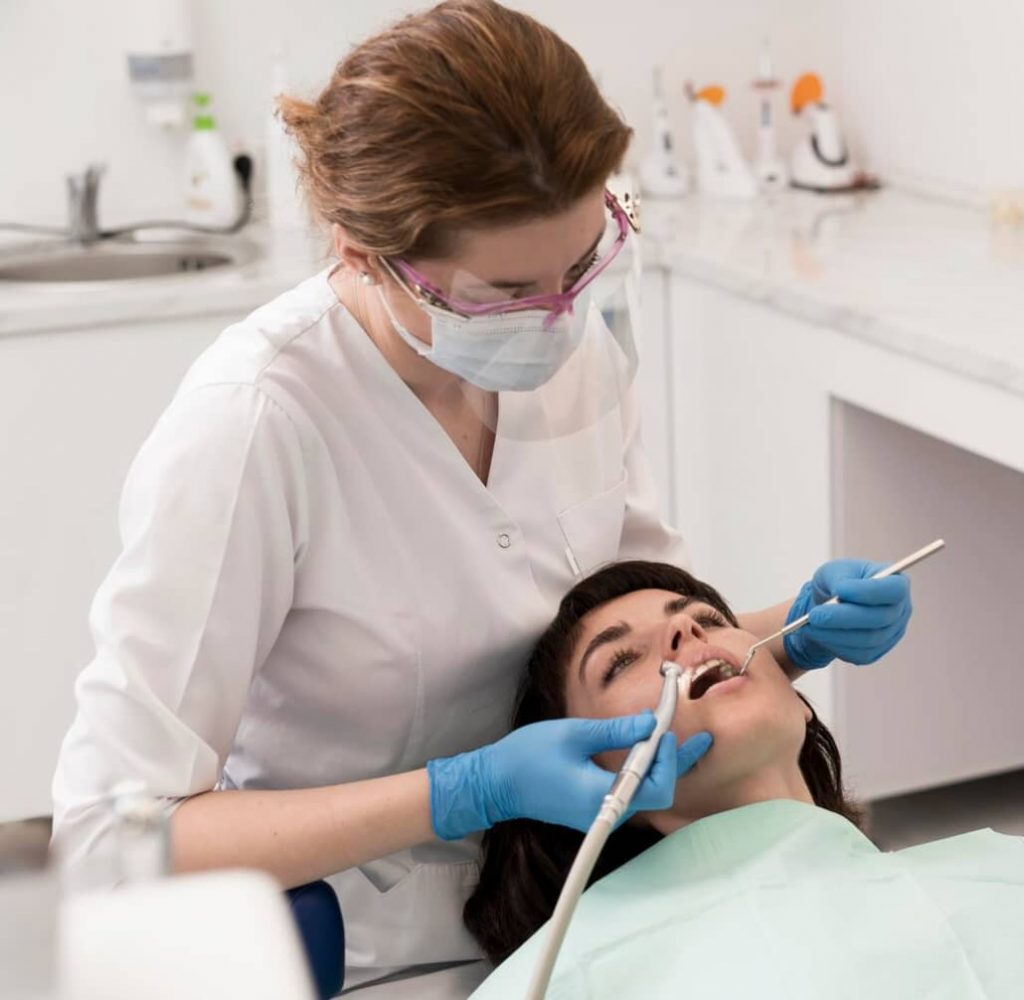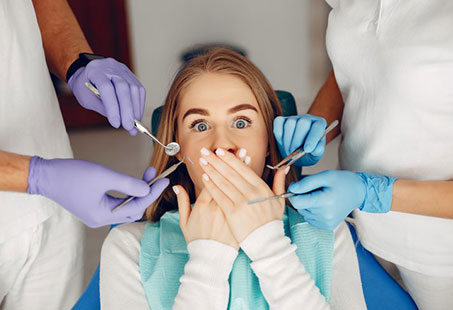Fear of pain is one of the reasons why some people avoid going to the dentist. But there’re others who also feel anxious and even find it hard to sit still. In both these and other instances, dental anesthesia can be hailed as a blessing of modern medicine.
There are different types of anaesthetics for dental treatments, including local, general and sedation. They can come in different forms for application or administration, and they can also be used in combination.
However, not many people are sure of the differences between the various types of anesthesia for dental work and what they can do for them during a procedure. In this guide, you’ll learn more about that and whether or not they’re safe.
What Is An Oral Anesthetic?
An oral anesthetic can refer to the use of local anesthesia in the mouth, either topically or through an injection. Topical anesthesia works by stopping the conduction of the nerves at the area in which it is applied.

As a result, you’ll temporarily lose sensation there. There are different uses of this type of anesthesia for the mouth, such as:
- Canker sores
- Toothache
- Gum soreness/injury
- Teething
It has other uses as well on different areas of the body and is available in different forms, which include gels, creams, ointments, sprays, solutions, patches, etc. The goal is to provide you relief from pain and discomfort.
On the other hand, local anesthesia for dental treatments can also be injected, and that also reversibly blocks nerve transmission in a specific area. This will also make it possible for you to not experience any pain during your procedure although you’ll still be awake.
Local anesthesia with injection might be given when the procedure is more invasive (goes deeper). However, it’s not always used on its own.
For instance, if you’re not comfortable with needles, your dentist might apply a topical mouth anesthesic before using the needle. This will help with discomfort from the insertion of the needle.
What Are The Types Of Dental Anesthesia?
There are 3 main types of dental anesthesia, which are as follows:
General Anesthesia
According to the American Society of Anesthesiologists (ASA), general anesthesia is a type of medicine given through a mask or IV that’ll make you unconscious. It’s commonly used for major surgeries and is administered by an anesthesiologist (who is a specialist medical doctor).

In dentistry, general anesthesia can be used for a number of treatments. A study published in Acta Stomatologica Croatica reported its use in full-mouth rehabilitation procedures that included:
- Removing calculus (hardened plaque)
- Cavity restoration
- Sealing fissures
- Root canal
- Surgical teeth extractions
- Dental Implants
The main reason why general anaesthesia was used was that the patients weren’t being compliant under local anaesthesia or the nature of the surgery demanded the use of this type of anaesthetic.
General anaesthesia can also be used for patients who have anxiety or “challenging behaviors,” such as children or special needs patients, according to another research published in the Journal of Dental Anesthesia and Pain Medicine.
Some other procedures for which general may be used include bone grafting, sinus lifting, jaw (orthognathic) oral surgery with anesthesia, etc. Your doctor can best advise you further on general anesthesia for oral surgery.
However, if you’re getting general anaesthesia, your dentist might give you some pre-op instructions to follow. For instance, the NHS states that you shouldn’t end (including chewing gum) or drink 6 hours before a dental procedure with general anaesthesia.
Also, you shouldn’t smoke for 24 hours before it either as it can interfere with the anesthesia and recovery. Make sure that you follow any pre-op advice from your dentist on general anaesthesia for dental work to avoid any delay in the surgery.
Local Anesthesia
Unlike general, local anesthesia is used to numb a specific area of the body. You’ll be awake and alert with this type of anesthetic although you can feel pressure during the procedure.

One research published in Anesthesia Progress reported that the most common dental procedures requiring local anesthetics include:
- Extraction of permanent teeth
- Extraction of baby teeth
However, local anesthesia can also be injected for other procedures, such as teeth shaving for dental crowns, filling of tooth cavities, teeth scaling and root planing, etc.
Local anesthesia is considered safer than general. It rarely causes side effects and complications, according to the ASA, and when it does, they’re “usually minor.”
But, of course, not every dental treatment with local anesthesia alone is preferred though. Your dentist may also combine local anesthesia with general.
For instance, according to a review published in Cochrane, local anesthesia is routinely given to children undergoing general anesthesia for dental procedures. It helps manage pain after surgery, and reduces bleeding and the body’s reaction to the procedure.
Sedation
Another type of anesthesia, which is also known as monitored anesthesia care or twilight sedation, is sedation. With sedation dentistry too, you’ll have your dental procedure painlessly and it’ll also make you feel more calm and more relaxed.

According to the ASA, sedation is used for “minor” or “shorter, less complex” procedures where local anesthetics aren’t enough but general anesthetics aren’t needed either.
It can make you forgetful and groggy (temporarily) and while it’s not meant to make you unconscious, you might fall asleep (although you can easily be woken back up). There are different types of sedation, which are as follows:
- Nitrous oxide (laughing gas) – It’s inhaled through a mask and starts working within minutes.
- I.V. sedation – It’s administered through the vein and also starts working within minutes. You’ll stay awake but be less aware of the surroundings.
- Oral sedation – You take the drug orally before the procedure (your dentist will tell you exactly when). It might take 15 to 30 minutes to work.
It should be noted that there are different levels of sedation as well: mild/minimal, moderate and deep.
Dental sedation has different uses. It can help reduce the anxiety of patients and is even used for dental phobia. It can also be given with dental implant local anesthesia or tooth extraction.
How To Numb A Tooth?
If your dentist wants to numb the area around the tooth, they’ll likely use local anaesthesia – both topical and injection. Of course, it’s not the tooth itself that’s injected, the surrounding gum tissue is.
First, the topical anesthetic gel will be used for numbing the teeth area so you don’t feel pain from the prick of the needle. After that, the local anesthetic injection will be administered.
Depending on the type of anesthesia used, it could be a few (or more) minutes before it takes effect. Afterwards, your dentist will perform the treatment.
How Is Dental Anesthesia Performed?
Depending on the type of anesthesia that’s being used, it can be performed in a number of ways:
- General anesthesia – inhalation through a mask/tube or IV.
- Local anesthesia – topically or through an injection
- Sedation dental – inhalation through a mask/nosepiece, IV or orally
In Which Treatments Is Dental Anesthesia Used?
Dental anesthesia can be used in a number of dental procedures. These can include:
- Tooth filling
- Teeth prepping
- Deep cleaning
- Placing dental implants
- Bone grafting
- Sinus lifting
- Jaw surgery
- Root canal
- Tooth Extraction
More commonly, you’ll hear about anesthesia for tooth extraction and root canals. But wherever the pain is a concern or you’re feeling quite anxious about the dental treatment, your dentist might consider using general or mouth anesthesia.
However, the type of dental anesthetic used will depend on a number of factors including the invasiveness of the procedure, your behavior, how compliant you are, your medical history etc.
Who Is Given Dental Anesthesia?
Anesthesia can be given to healthy adults, children and patients with special needs (medical, mental or psychological impairment, according to a study published in the Acta Anaesthesiologica Taiwanica) who’re undergoing a painful and/or invasive dental treatment.
It should be noted, however, that certain health conditions can make getting anesthesia more risky. Therefore, it’s important to discuss the potential complications arising from its use with your dentist beforehand. You should have an open discussion about its potential pros against cons, whether it’s dental implant anesthesia or just teeth extraction anesthesia.
Is Dental Anesthesia Safe?
Anesthesia is considered “very safe” by the American Society of Anesthesiologists. Local is considered the safest, but it’s not always possible to use it for every type of procedure. And still, you should know that anesthesia comes with certain risks.
A few of local anesthesia’s include:
- Dizziness
- Headache
- Pain
- Difficulty urinating or leaking urine
General anesthesia may lead to:
- Allergic reaction
- Breathing problems
- Pneumonia
This list is in no way complete, so you must talk to your dentist about anesthesia in more detail. This is especially important as mentioned above anesthesia is riskier for some individuals.
After a dental procedure, your dentist might also advise you to wait until the anesthesia wears off in case you don’t hurt yourself unknowingly (e.h. biting or burning your tongue while it’s numb).
Conclusion
Dental anesthesia is nothing short of a blessing. Certain dental procedures can be too painful to undergo without having the area numbed, such as dental implants anesthesia. Of course, it can make it difficult for the dentist to perform the treatment and it can worsen things for you as well.
Therefore, anesthesia for dental has been very helpful in ensuring the provision of treatment to those who need it, but might not be able to without it (such as children or those with special needs). For instance, tooth anesthesia can make the procedure painless during extraction (it’s not the tooth where the anesthetic for dental is administered; gum numbing is done).
Depending on the type of treatment you’re undergoing at your dental clinic in Turkey or anywhere, there are different types of anesthesia (dental anesthesia cost also varies accordingly) that can be given. And there are quite a number of ways in which they can be administered.
They can also be used together to make sure that you’re comfortable and don’t experience pain. While they’re safe, it’s still important that you have an in-depth discussion with your dentist about their potential risks and complications.
Reviewed and approved by Dr Izbel Aksit
FAQ
Is dental anesthesia safe during pregnancy?
Usually, local anesthesia is preferred for pregnant patients who require dental treatment. Even then, however, your dentist might recommend delaying the treatment. In any case, you must talk to your dentist about it as only they can best advise you on this.
How long does dental anesthesia last?
It depends on the type of anesthesia being used. It might wear off in a few minutes (like laughing gas) to hours. Since they can take some take to wear off, it’s best if you have someone assist you.
